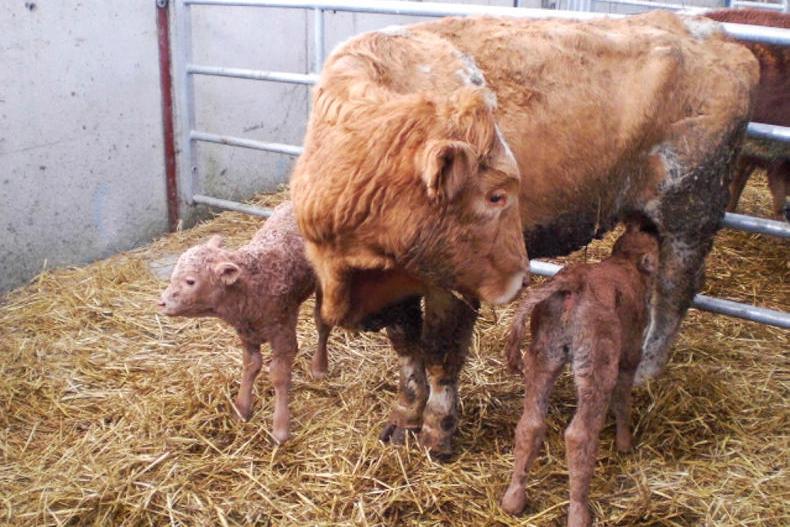More than 14,000 twin calves have been registered so far this year, across both the dairy and beef herds.
Latest figures show that some 7,189 sets of twins have been registered with the ICBF since 1 January.
Is the number of twins being born on the rise?
The answer is both yes and no.
Calf birth figures since 2010 show that the number of calves has risen sharply in the past six years.
Some 7,189 sets of twins have been registered with the ICBF since 1 January
In 2010, there were 31,803 sets of twins registered with ICBF.
This increased by almost 10,000 to a massive 41,784 sets of twins born on Irish farms in 2016.
That’s a 30% hike in the number of sets of twin calves.
However, the national herd has also expanded considerably in the same period.
The number of calves born has risen from 1,992,339 in 2010 to 2,323,256 calves in 2016.
When the twin figures are taken in context of the national herd increase, the proportion of twins has actually remained fairly steady, at between 3% and 4% of the total calf crop every year.

Triplets and quadruplets
Triplets and quadruplets are far less common on farms.
ICBF figures show that the rate of triplet calves is around 0.3%, some 10 times more rare than twins.
Quadruplet calves are even more rare, only occurring once in every 11m births.

Have you had lots of multiple births in your herd? Let us know at news@farmersjournal.ie.
How common are twin or triplet calves?
Twin calves with same dam but different sires
Farmer Tommy Moyles writes about his disappointment at losing twin calves







SHARING OPTIONS